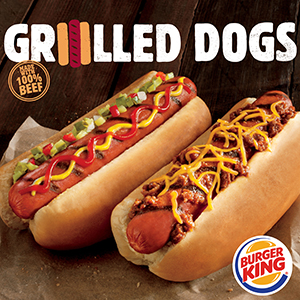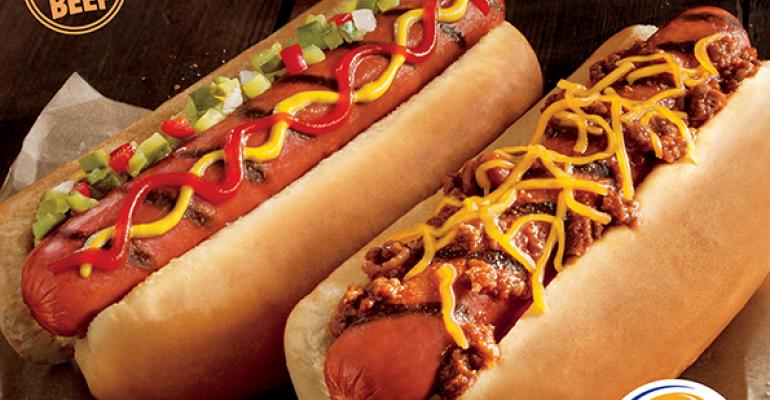 Burger King sold plenty of grilled hot dogs in the first quarter, and domestic same-store sales rose 4.4 percent as a result, parent company Restaurant Brands International said on Thursday.
Burger King sold plenty of grilled hot dogs in the first quarter, and domestic same-store sales rose 4.4 percent as a result, parent company Restaurant Brands International said on Thursday.
The increasing sales, along with RBI’s cost discipline, led to strong profits in the period ended March 31. Operating income in the quarter rose 48 percent to $330.6 million, from $224.1 million, despite a decline in revenue to $918.5 million from $933.3 million.
“We’re pleased with the launch of grilled dogs this quarter,” RBI CEO Daniel Schwartz said on the call. “It’s one of the larger products we’ve had in some time.”
Yet executives on the company’s earnings call also warned that same-store sales at Burger King have slowed thus far in the second quarter, though they were reticent to give a reason for the slowdown.
“It’s hard to say,” Schwartz said. “Internationally, we continue to grow on a strong pace. The industry is always competitive. It’s our job to grow independent of macro situations. But we’re confident in our strategy of driving guest satisfaction and owner profitability.”
Oakville, Ontario-based Restaurant Brands International operates both Burger King and Tim Hortons. Both brands reported same-store sales growth domestically and internationally in the first quarter. Tim Hortons same-store sales rose 5.6 percent worldwide, including 5.6 percent in its home Canada market and 5.8 percent in the U.S.
At Burger King, global same-store sales rose 4.6 percent. Executives acknowledged that its sales improved in part because of good weather in the U.S. in the first quarter along with an extra day in February because of Leap Day.
But they also suggested that the company’s marketing and menu initiatives are taking hold.
Executives on the call said that the hot dogs' launch in the first quarter generated sales, both with additional traffic and because consumers added the product to existing orders.
In addition, executives said that the company’s improved sales and profitability over the past few years, as well as its continued progress on remodeling, could soon propel more unit growth in the U.S. — where the brand’s absolute size has been stagnant for years.
Schwartz noted that average unit volumes in the U.S. have increased from $1.1 million to $1.3 million in recent years. At the same time, operators have reimaged a lot more locations — with half of the approximately 7,000 domestic units now reimaged.
“One of the biggest things we focus on is franchisee profitability,” CFO Josh Kobza said on the earnings call. “That’s fundamentally what will drive growth. There are opportunities for us to expand our footprint in the U.S. and bring the brand to more communities. As we increase sales in the restaurants and profitability, it makes it more attractive to do that for our franchisee partners.”
Net income for the chains in the quarter was $50 million, or 22 cents per share, up from a loss of $8.3 million or 4 cents in the same period a year before.
Executives on the call believe that the growth opportunity for both of its brands is extensive enough, both in the U.S. and internationally, that they don’t need additional brands — at least for now.
“There’s so much room for organic growth in all of those countries between both brands,” Schwartz said. “We feel like we have so much on our plate right now, just focused on running these two brands. If we run the two brands really well, we’ll deliver great value to our employees, guests and shareholders.”
The company is particularly hopeful for Tim Hortons, which is dominant in Canada but has 650 locations in the U.S., and even fewer outside of North America. The company has recently signed development agreements with operators in Cincinnati, Indianapolis and Columbus, Ohio.
“We’re finding the right partners in the world’s largest QSR market,” Schwartz said.
Contact Jonathan Maze at [email protected]
Follow him on Twitter at @jonathanmaze





